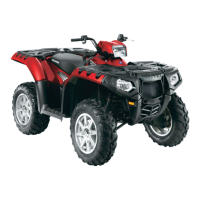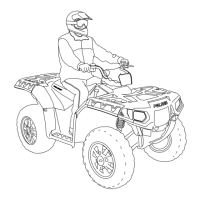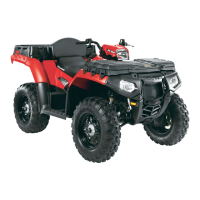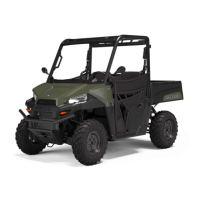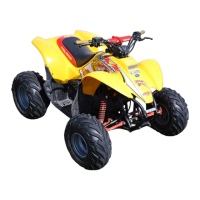Why is my Polaris 550 INDY 144 experiencing poor low RPM performance?
- EElizabeth JacksonSep 23, 2025
If your Polaris Offroad Vehicle has poor low RPM performance, it could be due to: * Worn drive belt: Inspect and replace as needed.

Why is my Polaris 550 INDY 144 experiencing poor low RPM performance?
If your Polaris Offroad Vehicle has poor low RPM performance, it could be due to: * Worn drive belt: Inspect and replace as needed.
Why is my Polaris Offroad Vehicle engine hard to start and requires more than normal pulls?
If your Polaris Offroad Vehicle engine requires more than normal pulls to start, it could be due to: * Poor fuel: Replace with fresh winter fuel. * Not enough fuel getting to engine: See your dealer.
What to do if my Polaris 550 INDY 144 Offroad Vehicle engine doesn't start (electric start models)?
If your Polaris Offroad Vehicle engine doesn't start (electric start models), see your dealer to check the wire connections.
What to do if my Polaris 550 INDY 144 Offroad Vehicle engine lacks power?
If your Polaris Offroad Vehicle engine lacks power, the possible causes are: * Fouled or defective spark plug(s): Replace the plug(s). * Fuel filter (loss of high RPM power): See your dealer. * Plugged fuel filter or tank pick-up sock: See your dealer. * Incorrect clutching: See your dealer. * Carburetor and fuel pump: See your dealer.
What causes noise in the drive system of my Polaris 550 INDY 144?
Noise in the drive system of your Polaris Offroad Vehicle can be due to several reasons: * Broken drive clutch components: See your dealer. * Bearing failure in the chaincase, jackshaft, or front drive shaft: See your dealer. * Drive belt surface flat spots: Inspect and replace as needed. * Drive chain loose: Inspect and adjust (or replace). * Drive chain worn, sprocket teeth broken: See your dealer.
Why is there noise in the drive system of my Polaris 550 INDY 144?
Noise in the drive system of your Polaris Offroad Vehicle can be caused by: * Drive belt surface flat spots: Inspect and replace as needed. * Drive chain loose: Inspect and adjust (or replace).
What to do if my Polaris 550 INDY 144 Offroad Vehicle machine darts from side to side?
If your Polaris Offroad Vehicle darts from side to side: * Make sure spindles and all steering components turn freely. * Ensure skags are straight on skis.
Why does my Polaris 550 INDY 144 Offroad Vehicle engine continually backfire?
If your Polaris Offroad Vehicle engine continually backfires, consider these potential causes: * Faulty plug(s): Change the plug(s). * Carburetor / Fuel System: Dirt or ice may be in the fuel system (add deicer to non-ethanol fuel at all times to prevent icing). * Incorrect throttle freeplay or faulty switch.
What causes a Polaris 550 INDY 144 drive belt to turn over?
A Polaris Offroad Vehicle drive belt may turn over due to: * Wrong belt for application: Replace the drive belt. * Clutch alignment out of spec: See your dealer. * Engine mount broken or loose: Inspect and replace. See your dealer.
What causes harsh drive clutch engagement in my Polaris 550 INDY 144 Offroad Vehicle?
Harsh drive clutch engagement in your Polaris Offroad Vehicle can be due to: * Drive belt worn or too narrow: Replace the drive belt. * Excessive belt/ sheave clearance: See your dealer.
| Brand | Polaris |
|---|---|
| Model | 550 INDY 144 |
| Category | Offroad Vehicle |
| Language | English |
Guidelines for safe operation, including riding techniques, apparel, and environmental awareness.
A comprehensive checklist of items to inspect before each snowmobile use.
Essential checks for the throttle, brakes, steering, and engine controls before operation.
Step-by-step procedure for starting the snowmobile engine, including choke use.
Methods for safely stopping the snowmobile in emergency situations.
Recommended procedures for breaking in the engine and drive belt for longevity.
Information on fuel type, handling precautions, and recommendations.
Guidance on checking and maintaining the oil level for engine lubrication.
Outline of recommended maintenance schedules and service intervals.
Information on brake system inspection, fluid, and bleeding procedures.
Diagnosing and resolving common engine-related problems and performance issues.
Comprehensive explanation of what the warranty covers and what it excludes.

